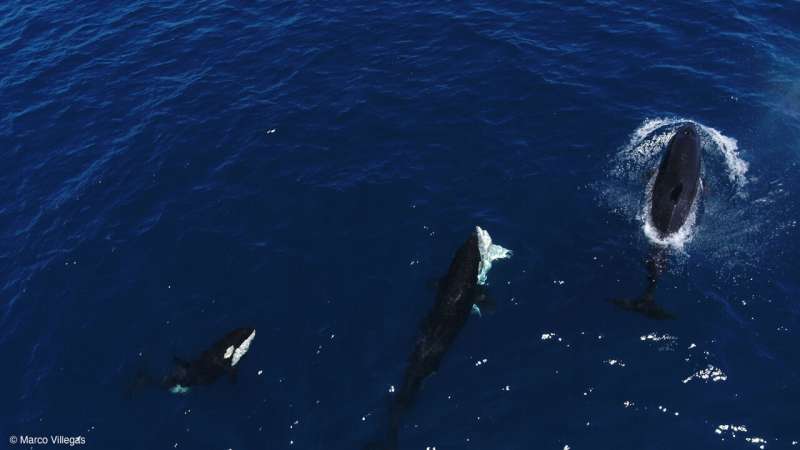
A specialized group of orcas, known as Moctezuma’s pod, has been observed in the Gulf of California hunting young great white sharks. This behavior, which involves flipping the sharks upside-down to consume their nutrient-rich livers, highlights a previously underappreciated aspect of orca predation. The findings were published in the journal Frontiers in Marine Science on November 3, 2025.
Scientists recorded two separate hunting events, during which the orcas killed three juvenile white sharks. The hunts were meticulously documented, allowing researchers to identify the individual orcas involved based on unique markings on their dorsal fins. In the first incident in August 2020, five orcas cooperatively pursued a juvenile white shark, ultimately subduing it and extracting its liver. A similar scene unfolded in August 2022, further confirming this predatory behavior.
According to Erick Higuera Rivas, marine biologist and project director at Conexiones Terramar and Pelagic Life, this method of hunting demonstrates the orcas’ remarkable intelligence and social learning capabilities. He stated, “Orcas that eat elasmobranchs—sharks and rays—could eat a great white shark if they wanted to, anywhere they went looking for one.”
The orcas employ a technique that induces a state known as tonic immobility in the sharks. This state temporarily paralyzes the shark, rendering it defenseless and allowing the orcas to feed on valuable organs. Higuera explained, “This temporary state renders the shark defenseless, allowing the orcas to extract its nutrient-rich liver and likely consume other organs as well.”
The research team, which includes Dr. Salvador Jorgensen from California State University, emphasizes the significance of their findings. “This is the first time we are seeing orcas repeatedly target juvenile white sharks,” he noted. Unlike adults, who quickly vacate areas when threatened by orcas, juveniles may lack the same learned responses, making them easier targets.
The Moctezuma pod has previously been documented hunting rays, whale sharks, and bull sharks, suggesting they may have adapted their hunting strategies based on experience. The increasing presence of juvenile great white sharks in the Gulf of California could be linked to changing ocean conditions, such as climate events like El Niño. These changes might have altered the distribution of white shark nursery areas, exposing young sharks to predation.
While the observations are compelling, scientists acknowledge the need for further research to understand the full extent of orca predation on white sharks. Dr. Francesca Pancaldi from the Instituto Politécnico Nacional Centro Interdisciplinario de Ciencias Marinas stated, “Generating information about the extraordinary feeding behavior of killer whales in this region will lead us to understand where their main critical habitats are.”
Future studies will focus on the diet of Moctezuma’s pod to determine whether they regularly hunt white sharks or primarily target juveniles when available. Conducting this research may prove challenging due to the costs associated with fieldwork and the unpredictable nature of orca hunting behavior.
The findings shed light on the complex interactions between orcas and white sharks, revealing a dynamic predator-prey relationship that has significant implications for marine ecology. The ongoing study aims to enhance conservation efforts by identifying critical habitats and developing management plans to mitigate human impact on these marine predators.







